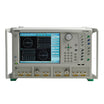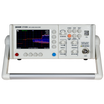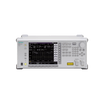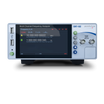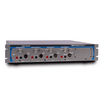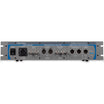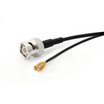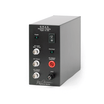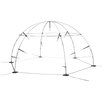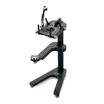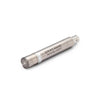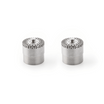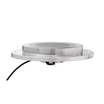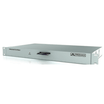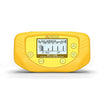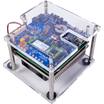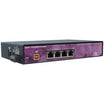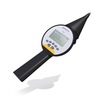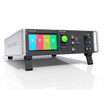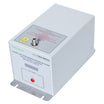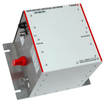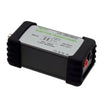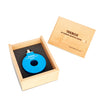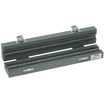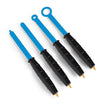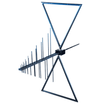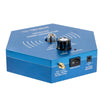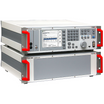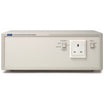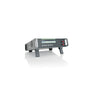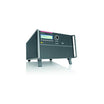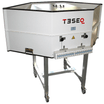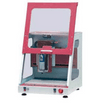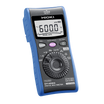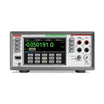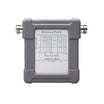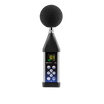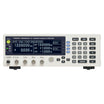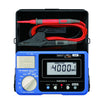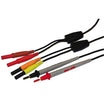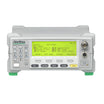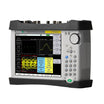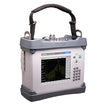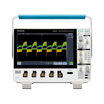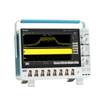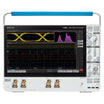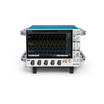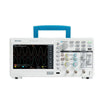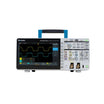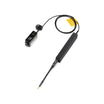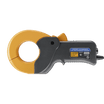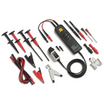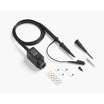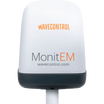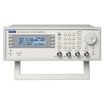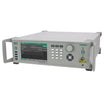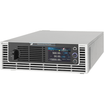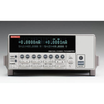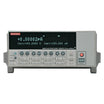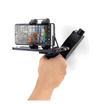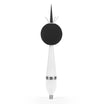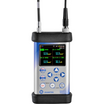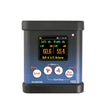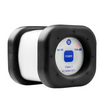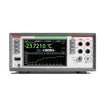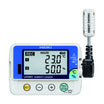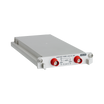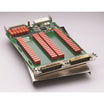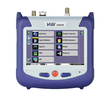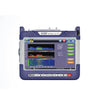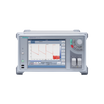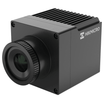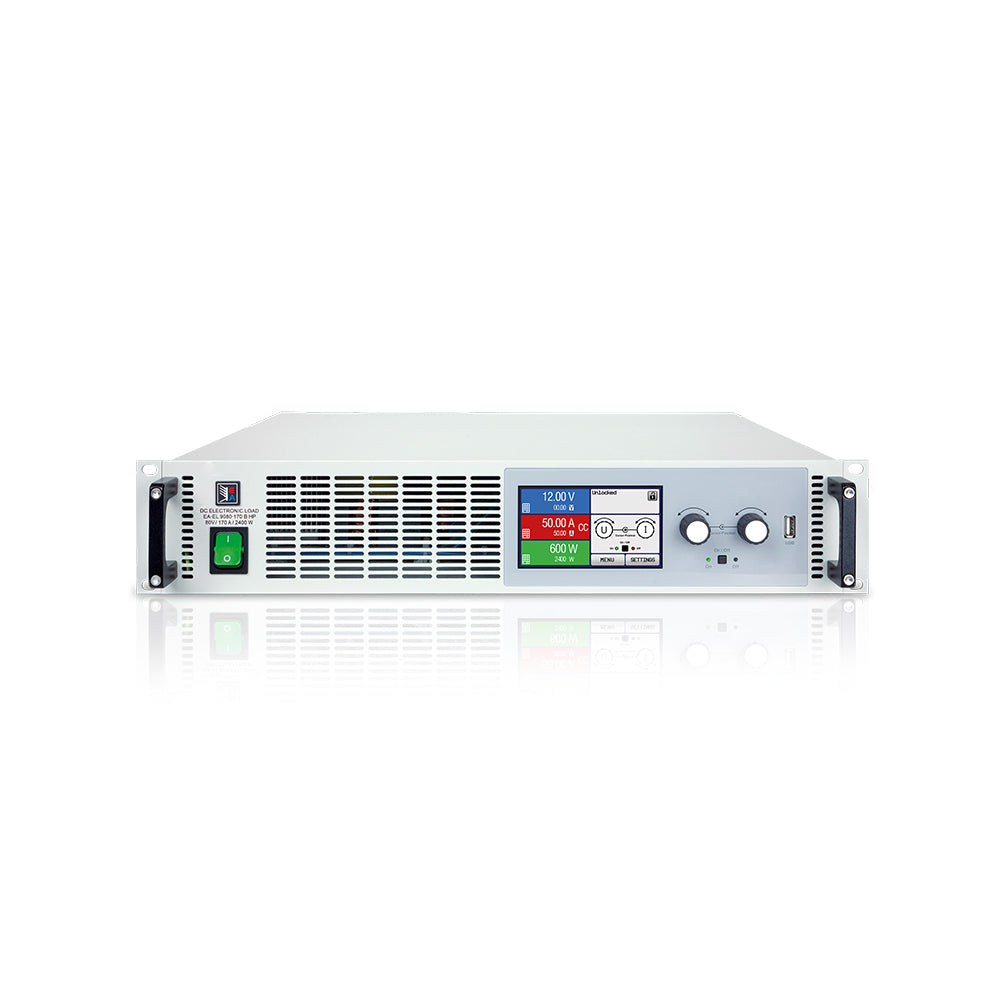
EA-EL 9080-170 B HP 2U Electronic Load
Brug vores chat til personlig support eller kontakt os via +45 31 33 18 19 eller salg@GOmeasure.dk
- Housing: 19"
- Voltage (U): 80.00
- Current (I) Ampere: 170.00
- Power (P) Watt: 2400.00
Opdag mulighederne
Mere information
Beskrivelse
The electronic DC loads of series EA-EL 9000 B HP replace the former series EA-EL 9000 HP and reduce the required unit height from former mini-mum 3U to now only 2U. It means that the steady power of 7200 W of a former EA-EL 9000 HP device can nowadays already be achieved in 6U of height where it required 9U before. The result is a space saving of 33% which allows for achieving even more power in a 19” cabinet.
All models support the four common regulation modes constant voltage (CV), constant current (CC), constant power (CP) and constant resistance (CR). The FPGA based control circuit provides interesting features, such as a function generator with a table based function for the simulation of nonlinear internal resistances.
The large color TFT touch panel offers an intuitive kind of manual operation, such as it is prolific nowadays with smart phones or tablet comput-ers. Response times for the control via analog or digital interfaces have been improved by the FPGA controlled hardware.
In parallel operation of multiple devices, a master-slave bus is used to link the units to a bigger system where the actual values are totaled and the set values distributed.
Features:
- Wide AC supply voltage range: 90...264 V, with active PFC
- Input power ratings: 0...600 W up to 0...2400 W, expandable up to 76.8 kW
- Input voltages: 0...80 V up to 0...750 V
- Input currents: up to 170 A per unit
- FPGA based control circuit
- Multilingual color touch panel
- profiles, true function generator
- protections: OVP, OCP, OPP
- Operation modes: CV, CC, CP, CR
- Galvanically isolated interfaces (analog and USB)
- Master-slave bus for parallel connection
- Slot for a wide selection of industrial interface modules
- SCPI command set and ModBus RTU support
- LabView VIs and remote control software (Windows)
Power ratings, voltages, currents
The available voltage range portfolio offers five different voltage from 0...80 V DC up to 0...750 V DC. Input currents up to 170 A with only one unit are available. The series offers two power classes for every voltage class, for example 0...1200 W or 0...2400 W steady power at normal ambient temperatures with, for instance, an 80 V model.
Construction
All models are built in 19“ wide rack enclosures with 2U of height and 460 mm (18.1”) of depth, which makes them ideal for use in 19“ cabinets of various sizes, for example 42U, and for the design of systems with very high power. It is furthermore possible to build cabinet systems with mixed equipment, i.e. electronic loads and power supplies, in order to achieve the source-sink principle with high power ratings.
Handling (HMI)
Manual operation is done with a TFT touch panel, two rotary knobs and a pushbutton. The large color display shows all relevant set values and actual values at a glance. The whole setup is also done with the human-machine interface, as well the configuration of functions (square, trian-gle, sine) etc. The display is multilingual (German, English, Russian, Chinese).
Function generator and table control
A special feature is the comfortable, FPGA based, digital function and arbitrary generator. It
enables controlling and running user-customizable load profiles and can generate sine, square,
saw tooth and ramp functions in arbitrary order.
With a freely programmable digital value table of 3276 effective points, which is embedded in the control cir- cuit, the devices can reproduce non-linear internal resistances, such as those of batteries or LED chains.
Battery test
For purposes of testing all kinds of batteries, such as for example constant current or constant resistance discharging, the devices offer a battery test mode. This show extra values for elapsed testing time and consumed capacity (Ah).
Data recorded by the PC during tests with, for example, EA Power Control can be exported as Excel table in CSV format and analyzed later in MS Excel or similar tools and even visualized as a discharge diagram. For more detailed setup, there is also an adjustable threshold to stop the battery test on low battery voltage, as well an adjustable maximum test period.
MPP tracking
For photovoltaics related tests there is another function included as standard: MPP tracking. Four modes allow for simulation of the typical char-acteristics of solar inverters being connected to solar modules or panels. The function is used to determine typical operation parameters, such as the so-called Maximum Power Point and the related values UMPP, IMPP and PMPP. One of the modes even offers particular analysis with different irradiation values in form of a table with 100 points.
Share Bus
The so-called „Share Bus“ is an analog connection at the rear of the devices and is used to balance current across multiple similar units in paral-lel connection, such as with loads of this series and series EA-EL 9000 B. It can also be used to build a two-quadrants system in connection with power supplies of series EA-PSI 9000 or EA-PS 9000. Such a system is dedicated for testing purposes using the source-sink principle.
Remote control & connectivity
For remote control, there are by default two interface ports (1x analog, 1x USB) avail-able on the rear of the devices, which can also be extended by optional, pluggable and retrofittable, digital interface modules (dedicated slot).
For the implementation into the LabView IDE we offer ready-to-use components (VIs) to be used with the interface types USB, RS232, GPIB and Ethernet. Other IDEs and in-terfaces are supported by documentation about the communication protocol. Windows users can profit from the free software “EA Power Control”. It offers a feature called “Sequencing”, where the device is controlled through a semi-automatic table in CSV format. This table represents a simple test procedure and can be created and edit-ed in MS Excel or other CSV editors and then imported into the software tool.
Power derating
The abbreviation “HP” in the series name stands for “High Power”. It defines the rated steady power at an higher ambient temperature of 30°C, compared to other electronic loads, for example from series EA-EL 9000 B. Despite of it, all models of this series will reduce the input power based in a thermal derating in order to avoid overheating.
Specifikationer
Dokumenter
Muligheder
Video
The electronic DC loads of series EA-EL 9000 B HP replace the former series EA-EL 9000 HP and reduce the required unit height from former mini-mum 3U to now only 2U. It means that the steady power of 7200 W of a former EA-EL 9000 HP device can nowadays already be achieved in 6U of height where it required 9U before. The result is a space saving of 33% which allows for achieving even more power in a 19” cabinet.
All models support the four common regulation modes constant voltage (CV), constant current (CC), constant power (CP) and constant resistance (CR). The FPGA based control circuit provides interesting features, such as a function generator with a table based function for the simulation of nonlinear internal resistances.
The large color TFT touch panel offers an intuitive kind of manual operation, such as it is prolific nowadays with smart phones or tablet comput-ers. Response times for the control via analog or digital interfaces have been improved by the FPGA controlled hardware.
In parallel operation of multiple devices, a master-slave bus is used to link the units to a bigger system where the actual values are totaled and the set values distributed.
Features:
- Wide AC supply voltage range: 90...264 V, with active PFC
- Input power ratings: 0...600 W up to 0...2400 W, expandable up to 76.8 kW
- Input voltages: 0...80 V up to 0...750 V
- Input currents: up to 170 A per unit
- FPGA based control circuit
- Multilingual color touch panel
- profiles, true function generator
- protections: OVP, OCP, OPP
- Operation modes: CV, CC, CP, CR
- Galvanically isolated interfaces (analog and USB)
- Master-slave bus for parallel connection
- Slot for a wide selection of industrial interface modules
- SCPI command set and ModBus RTU support
- LabView VIs and remote control software (Windows)
Power ratings, voltages, currents
The available voltage range portfolio offers five different voltage from 0...80 V DC up to 0...750 V DC. Input currents up to 170 A with only one unit are available. The series offers two power classes for every voltage class, for example 0...1200 W or 0...2400 W steady power at normal ambient temperatures with, for instance, an 80 V model.
Construction
All models are built in 19“ wide rack enclosures with 2U of height and 460 mm (18.1”) of depth, which makes them ideal for use in 19“ cabinets of various sizes, for example 42U, and for the design of systems with very high power. It is furthermore possible to build cabinet systems with mixed equipment, i.e. electronic loads and power supplies, in order to achieve the source-sink principle with high power ratings.
Handling (HMI)
Manual operation is done with a TFT touch panel, two rotary knobs and a pushbutton. The large color display shows all relevant set values and actual values at a glance. The whole setup is also done with the human-machine interface, as well the configuration of functions (square, trian-gle, sine) etc. The display is multilingual (German, English, Russian, Chinese).
Function generator and table control
A special feature is the comfortable, FPGA based, digital function and arbitrary generator. It
enables controlling and running user-customizable load profiles and can generate sine, square,
saw tooth and ramp functions in arbitrary order.
With a freely programmable digital value table of 3276 effective points, which is embedded in the control cir- cuit, the devices can reproduce non-linear internal resistances, such as those of batteries or LED chains.
Battery test
For purposes of testing all kinds of batteries, such as for example constant current or constant resistance discharging, the devices offer a battery test mode. This show extra values for elapsed testing time and consumed capacity (Ah).
Data recorded by the PC during tests with, for example, EA Power Control can be exported as Excel table in CSV format and analyzed later in MS Excel or similar tools and even visualized as a discharge diagram. For more detailed setup, there is also an adjustable threshold to stop the battery test on low battery voltage, as well an adjustable maximum test period.
MPP tracking
For photovoltaics related tests there is another function included as standard: MPP tracking. Four modes allow for simulation of the typical char-acteristics of solar inverters being connected to solar modules or panels. The function is used to determine typical operation parameters, such as the so-called Maximum Power Point and the related values UMPP, IMPP and PMPP. One of the modes even offers particular analysis with different irradiation values in form of a table with 100 points.
Share Bus
The so-called „Share Bus“ is an analog connection at the rear of the devices and is used to balance current across multiple similar units in paral-lel connection, such as with loads of this series and series EA-EL 9000 B. It can also be used to build a two-quadrants system in connection with power supplies of series EA-PSI 9000 or EA-PS 9000. Such a system is dedicated for testing purposes using the source-sink principle.
Remote control & connectivity
For remote control, there are by default two interface ports (1x analog, 1x USB) avail-able on the rear of the devices, which can also be extended by optional, pluggable and retrofittable, digital interface modules (dedicated slot).
For the implementation into the LabView IDE we offer ready-to-use components (VIs) to be used with the interface types USB, RS232, GPIB and Ethernet. Other IDEs and in-terfaces are supported by documentation about the communication protocol. Windows users can profit from the free software “EA Power Control”. It offers a feature called “Sequencing”, where the device is controlled through a semi-automatic table in CSV format. This table represents a simple test procedure and can be created and edit-ed in MS Excel or other CSV editors and then imported into the software tool.
Power derating
The abbreviation “HP” in the series name stands for “High Power”. It defines the rated steady power at an higher ambient temperature of 30°C, compared to other electronic loads, for example from series EA-EL 9000 B. Despite of it, all models of this series will reduce the input power based in a thermal derating in order to avoid overheating.



